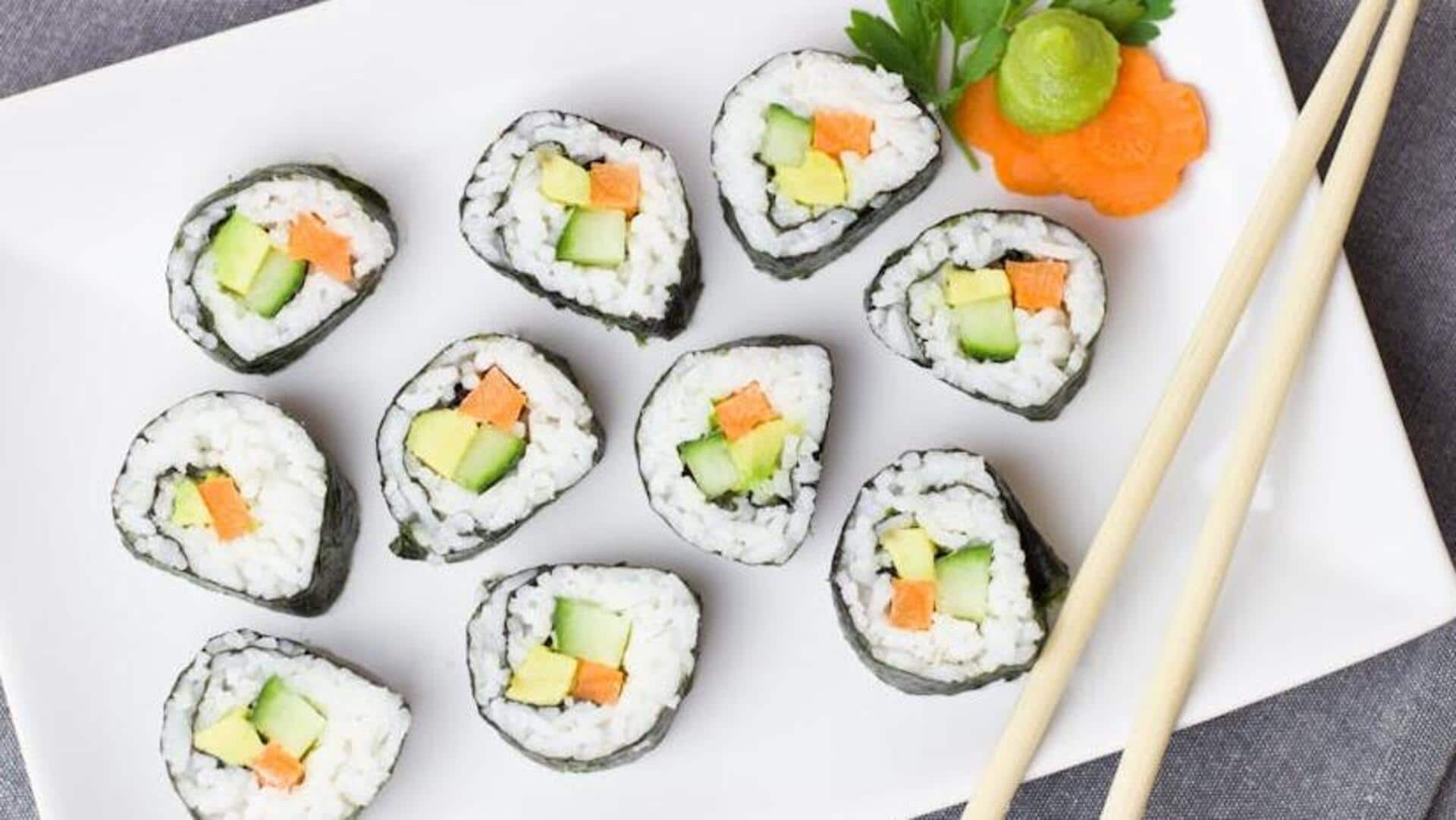
Check out this Japanese vegan sushi recipe
What's the story
Sushi, a dish with deep roots in Japanese culture, has evolved over centuries from its origins as a method of preserving fish. Today, it's enjoyed worldwide in various forms, including vegetarian and vegan options. This guide focuses on creating an innovative Japanese vegan sushi experience that is both delightful and accessible to all. Let's get cooking.
Ingredients list
Gather the following ingredients
To embark on this culinary journey, you will need two cups of sushi rice, three cups of water, one-quarter cup of rice vinegar, two tablespoons of sugar, one teaspoon of salt, nori sheets (seaweed), and an assortment of vegetables such as avocado slices, cucumber sticks, bell pepper strips, and carrot sticks. For added flavor and texture include pickled radish and tofu.
Step 1
Preparing the sushi rice
Begin by washing the sushi rice under cold water until the water runs clear. Combine the washed rice with three cups of water in a medium saucepan. Bring to a boil then reduce heat to low; cover and cook for 20 minutes or until water is absorbed. Remove from heat; let it stand covered for about 10 minutes.
Step 2
Seasoning the rice
While the rice is slightly cooling, take a separate bowl and mix together the rice vinegar, sugar, and salt until they are fully dissolved. After the sushi rice has cooled for about 10 minutes, gently fold this vinegar mixture into it. It's crucial to handle the grains delicately to ensure they remain fluffy yet sticky, avoiding any mashing of the rice.
Step 3
Assembling your vegan sushi rolls
Place a nori sheet on a bamboo rolling mat or parchment paper if you don't have one. Spread an even layer of seasoned sushi rice onto two-thirds of the nori sheet leaving space at one end so you can seal your roll later on. Arrange your choice of vegetable fillings across the center of your rice-covered area.
Step 4
Rolling and serving your sushi
Begin rolling your sushi carefully, using the mat or parchment as guidance. Apply gentle pressure to ensure the roll is tight without squishing the ingredients or tearing the nori. When you reach the end without rice, dab a little water on that edge. This helps seal the roll shut effectively, maintaining its shape and integrity throughout the process.